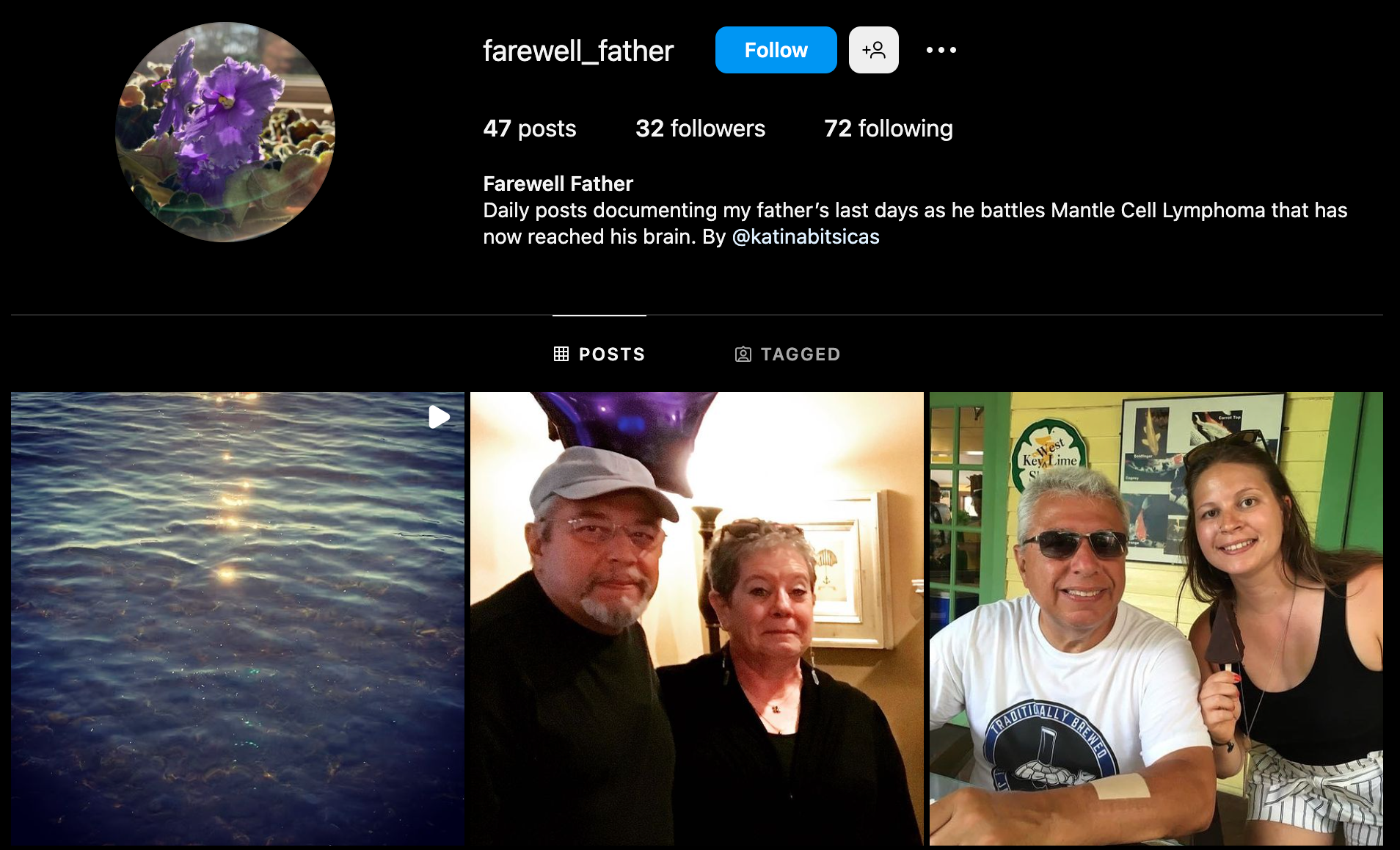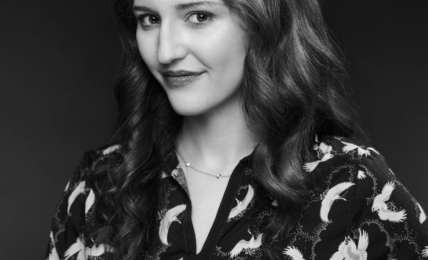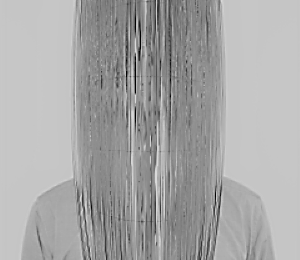Digital America interviewed Katina Bitsicas in April 2023 about her piece, How long after this before I’m gone? (2021).
:::
Digital America: How long after this before I’m gone? is clearly meaningful and emotionally deep. This piece is an interactive digital drawing of lymphoma cells that plays a recording of your father’s voice before he passed away. What inspired you to record your father’s voice? Did you have an idea for the final piece at the time of recording? Can you walk me through the process of condensing the 100 hours of recordings down into the 32 audio sections in the piece?
Katina Bitsicas: I began recording my father’s voice when I moved home to Michigan to serve as his caretaker, along with my mother. This was about 4 months before his passing. At this point, we knew that there weren’t any treatment options left, so I knew my time left with him would be short. This is what prompted me to begin recording, knowing that it was important to capture the last essence of him while I still could. I would leave my phone running and just have open-ended conversations with him. What I didn’t realize at the time, was that I was simultaneously recording the deterioration of his mental state as cancer spread throughout his brain. While I was recording, I did not even think that this would necessarily turn into a project. I was more concerned with just capturing his voice and these final memories. I didn’t listen to the audio recordings until a little over a year after he passed. This work was created while I was in residence at 77ART in Vermont, which allowed me the time and mental space to sift through the audio and listen to it for the first time. This was the only possible way to complete this project since I needed to be in the right mental place with a support group of other artists to have the strength to make this work. I wanted to select the portions of the recordings that had the ability to tell his complete story over the last 4 months, so I chose moments of clarity, of him knowing what was happening to his body, and others where he was mentally in a whole other world. This was to show the various facets of his brain as it was being consumed by cancer.
DigA: What was your experience using AR via Instagram? As technologies change, there’s a strong likelihood that the AR program you used will no longer support the work. Does the ephemerality of technology influence the work in any way?
KB: So, this work was originally made for the Adobe Aero platform, but then I created the SparkAR version, which is accessible on Instagram, to reach a broader audience, since you don’t need a separate app to view the work. While the AR work does have an ephemeral quality to it in terms of the platform, the drawings and recordings still exist digitally for me to rework the project on another platform if warranted or necessary. In contrast, I was commissioned to create a large-scale permanent installation for the NextGen Precision Health Institute in Columbia, MO, Enduring Impermanence, which combines imaging of Mantle Cell Lymphoma cells with a liquid light show technique using an old overhead projector to design the image that was printed as a large transparent digital print, installed on the lightbox wall. I saw this installation as creating something permanent out of the cancer cells that caused my father’s impermanence and becoming a way of making something that will outlive him.
DigA: farewell_father is a compilation of Instagram posts that document the last few days of your father’s life, serving as a tribute to the time you spent with him leading up to his passing. How did you determine which moments to capture and share? Can you walk me through the process of choosing Instagram as the platform for this piece?
KB: I created the Instagram account farewell_father to both connect with other individuals online who may be going through something similar and to hold myself accountable to doing something daily. In the midst of caregiving, you frequently lose track of time and what day it is, but the ritual of requiring myself to post daily on Instagram via a photo and writing, helped me to create some sort of order when everything else seemed so out of my control. I chose Instagram as a platform due to its ability to connect with others through images, and I was able to connect with other cancer survivors and caregivers through my posts. I posted reflections on what I saw each day, as well as a statement that would help me to remember those moments. A year after his passing, I went back to the Instagram page to re-read what I wrote for the first time. The interesting thing is that I didn’t remember the majority of what I wrote because I was so engrossed in the moment of caregiving. I transformed the posts into an artist book, also called farewell_father, that utilized the journal entries to create an accordion book. The book is bound with red thread, a symbol of connection back to those we’ve lost. The cover of the book is handmade paper crafted from abaca and flax fibers, ashes, and clothing samples, creating a semi-translucent, almost skin-like texture.

DigA: Knowing that over a hundred hours of footage of your father talking was recorded and only bits and pieces of that footage were used in How long after this before I’m gone? how did you decide what footage to cut and what footage to keep? Could you ever see the remaining footage having a second life and being featured in a different piece?
KB: I consider myself a digital hoarder, so I literally hang onto everything digital, whether it be digitized film reels and VHS tapes of archival family footage, or never deleting a single voicemail on my phone from a loved one. I think part of me just knows everyone in my life will inevitably pass on at some point, and I want to be sure I still have a way to remember and connect to them once they are gone. I also use these as source material for other artworks as well. So, yes, most definitely I think some of the material I recorded could pop up in another work in the future. It just depends on which stage of the grieving process I am exploring, and how I want to represent this conceptually.
DigA: Can you talk a bit about what you’re working on now?
KB: I am working on creating a dataset for an AI “advice bot” that generates phrases of advice when asked a question and is created from text messages, videos, and audio recordings of my father giving me advice while he was alive. The bot delivers intelligent responses based on what my father would say were he alive. This is also where some of the unused recordings that I discussed earlier are going. This bot will then be utilized for a live interactive digital performance with generative projection mapping of visual archival elements. I am interested in the social and ethical implications of what it means to literally bring a portion of someone’s being back to life to be translated through digital processing.
Check out How long after this before I’m gone?
Check out Jax Donohue’s response to How long after this before I’m gone?
:::

Katina Bitsicas is a Greek-American new media artist who utilizes video, installation, AR, and performance in her artworks to explore grief, loss, trauma, and memory. In 2022, her artist book Luci: The Girl with Four Hearts was published by Flower Press. She is an Assistant Professor and Coordinator of Digital Storytelling at the University of Missouri, where she also conducts research with the MU School of Medicine on utilizing digital storytelling as a meaning-making intervention for bereaved family members.



